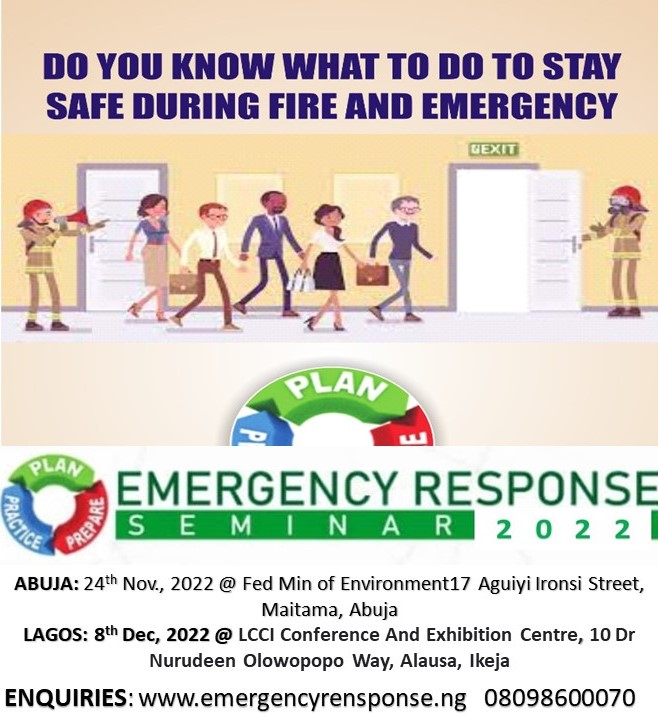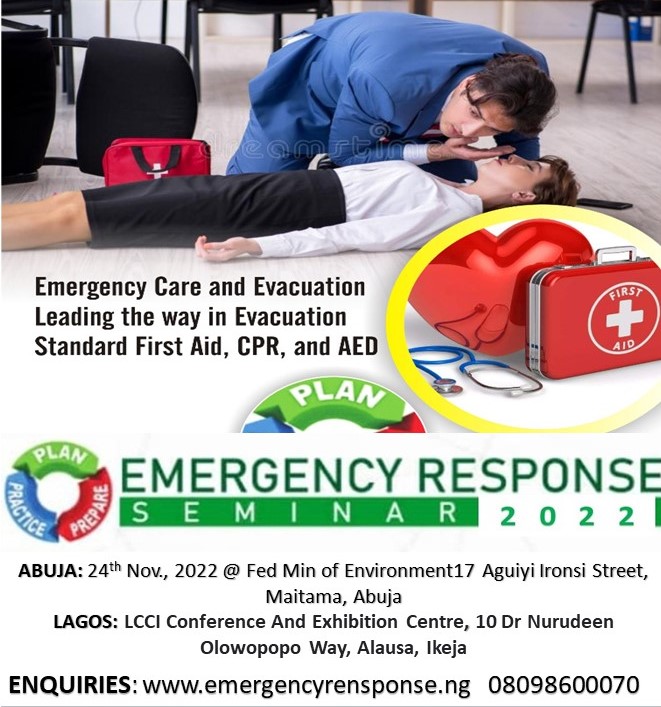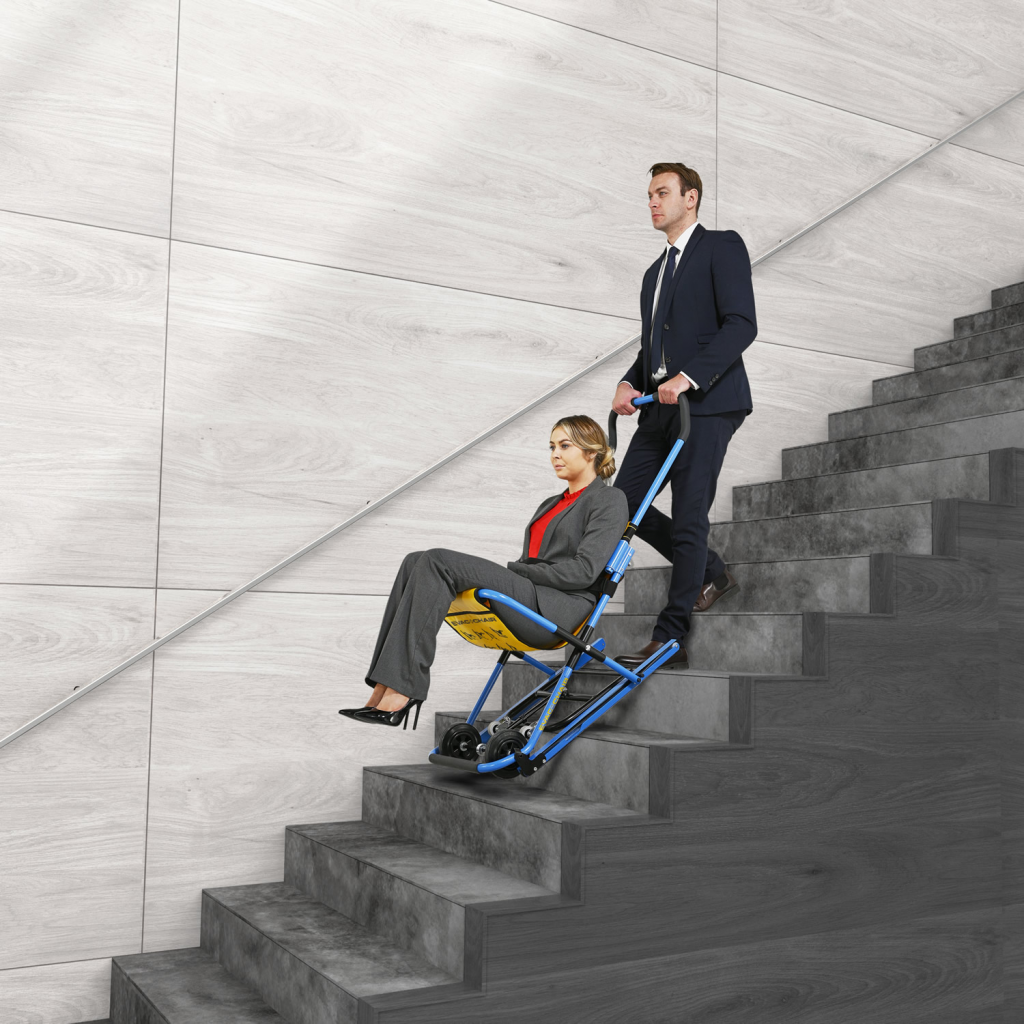
Emergency Action Plans (EAPs) help orchestrate employer and employee actions, including evacuations, during a workplace emergency.
An employer (i.e., property owner or occupier) must have an EAP for its facilities whenever a specific OSHA standard requires one—for example, at any facility where employees are required to evacuate when a fire alarm is sounded. Employers at facilities with fixed extinguishing systems and fire detection systems must also develop an EAP. And OSHA strongly recommends that all businesses have an EAP.
Safety coordinators and supervisors: Learn how to safely assist and evacuate people with disabilities during an emergency.
- Identify and Plan with Individuals who may need special assistance
- Request that individuals who feel they may need special assistance self-identify so arrangements can be made in advance to meet their needs.
- Note: Emergency Services recommends that departments maintain a personal emergency information form for each staff member. Include on the form a question regarding the need for special evacuation assistance.
- Note that individuals with unobservable disabilities may or may not self-identify before an emergency. These individuals may need additional help during emergency situations. Such disabilities may include:
- A learning disability
- Arthritis
- Asthma
- Cardiac condition
- Chronic back problems
- Psychological disability
- Prepare a personal evacuation plan for individuals requiring special assistance during an evacuation. Incorporate the recommendations on this page, and include:
- Intended route and means of evacuation
- Who will assist them
- Areas of refuge where they can wait for assistance
- Update your department Emergency Action Plan annually to accurately describe:
- The number of people with disabilities who may require special assistance during an evacuation
- Their primary work location
2. Establish a buddy System
- Assign 2 or more staff members who are willing and able to assist a colleague with a disability during evacuation. Identify and train assistants so at least 1 trained assistant is always present.
- Identify individuals with disabilities and the people assigned to assist them in the departmental Emergency Action Plan.

3. Prepare ahead of Time
- The department or area safety coordinator should prearrange appropriate evacuation procedures and routes with individuals having disabilities and the people assigned to assist them.
- If they are on the ground floor, most people with disabilities will be able to exit safely without assistance. However, it is important to verify that individuals using any kind of assistive device are capable of successfully leaving the building, unassisted, via emergency routes.
- Consider recommendations for specific disabilities when developing an evacuation plan. See considerations for:
- Low vision or blindness
- Deaf or hard of hearing
- Crutches, canes, or walkers
- Wheelchairs (non-ambulatory)
- Make sure everyone knows:
- The evacuation route and outdoor assembly area
- Areas of refuge for the building
- Have everyone involved practice the evacuation plan. This is the best way to discover unanticipated issues and solve them before — instead of during — an emergency.
4. Know how to help people with Low vision or blindness
Do the following when assisting an individual with low vision or blindness during an evacuation:
- Tell the person the nature of the emergency and offer your arm for guidance. This is the preferred method when acting as a “sighted guide.”
- Give verbal instructions to advise about the safest route or direction, using estimated distances and directional terms.
- As you walk, tell the person where you are and where obstacles are located.
- When you reach safety, orient the person to their surroundings and ask if they need further assistance.
- Ensure that a service animal is not separated from its master, if possible.

5. Know how to help people who are deaf
Some people who are deaf or hard of hearing may not perceive the audible fire alarm during an emergency. Use an alternative warning system, such as:
- Write a note to tell the person of the situation, the nearest evacuation route, and where to meet outside. (Sample script: “FIRE! Go out the rear door on your right. NOW. Meet outside on the front lawn.”)
- Turn the light switch on and off to gain their attention, and then indicate through gestures or in writing what is happening and what to do. Do not use the light switch technique if you smell natural gas in the area.
- Give visual instructions to advise about the safest route or direction by pointing toward exits or evacuation maps.
- Ensure that a service animal is not separated from its master, if possible.
6. Know how to help people with clutches ,canes or walkers
- Ask the person how you can best assist them in evacuating the area.
- Consider the evacuation options and the suitability of carrying the person. Carrying options include:
- Using a 2-person, lock-arm position
- Having the individual sit on a sturdy chair (preferably with arms) that is then lifted and carried
- Read about Evacuation chairs below for more information on safely transporting non-ambulatory individuals during an evacuation.
- Assist mobility-restricted people to an area of refuge or out of the building.

7. Know how to assist those on wheelchairs
Follow these recommendations when planning for and assisting people who use wheelchairs:
- Do not lift an individual in a wheelchair. There is too much risk involved for both the lay rescuer and the non-ambulatory person (back injury, loss of control of the wheelchair and person in it, tripping, falling).
- Note: Wheelchairs have many movable or weak parts that are not constructed to withstand the stress of lifting (e.g., the seat bar, foot plates, wheels, movable arm rests, etc.).
- Be aware that some individuals in wheelchairs may have:
- Minimal ability to move, and lifting them may be dangerous to their well-being
- Very little upper trunk and neck strength
- Respiratory conditions and/ or equipment that increase their vulnerability to smoke, vapors, or other airborne toxicants.
- Always ask the person having a disability what their needs and preferences are regarding:
- Ways of being moved
- Whether to extend or move extremities when lifting because of pain, braces, etc.
- Whether a seat cushion or pad should be brought along
- Aftercare, if the individual will be removed from the wheelchair
- If an individual is lifted from a wheelchair during evacuation:
- Ask others to bring the wheelchair.
- When the wheelchair is left behind, remove it from the stairwell and ensure it does not obstruct exit routes.
- Ensure that a service animal is not separated from its master, if possible.
- Reunite the person with the wheelchair as soon as possible.
8. Know how to use the evacuation chair
Evacuation chairs are specially constructed for evacuating non-ambulatory persons from multi-level facilities. Most designs enable 1 or 2 assistants to control movement down stairs without lifting.

- Use an evacuation chair only if you have been trained to do so.
- Do not make an emergency situation worse. Consider your options and the risks of injuring yourself and others in an evacuation attempt. Your first option is always to move the person to an area of refuge.
- Before attempting to transfer a person to an evacuation chair:
- Ask the person how you can help transfer them to the evacuation chair.
- Ask them if they have any special condition you should be aware of.
- Discuss how you intend to lift them and where you are going before you begin.
9. Know what to do during evacuation
- Check the intended evacuation route for obstacles, if possible. Remember: smoke, debris, flooding, loss of electricity, or other impediments may be present.
- Move people who are unable to leave the building to an area of refuge. Possibilities include:
- Most enclosed stairwells
- An adjoining building behind fire doors
- An office with a closed door, located a safe distance from the hazard
- Exit balconies and corridors
- Assist individuals who are able to leave the building, following your planned evacuation route, if possible. Do not use elevators.
- Report to your designated assembly area for a head count.
- Notify emergency responders immediately about the location and condition of any people remaining in the building.
- Do not reenter the building until authorized to do so by an appropriate authority such as police, fire department, etc.
* An area of refuge is a building location where people can wait for emergency assistance when evacuation may not be safe or possible. Emergency exit corridors and smoke-protected stairwells are resistant to fire and smoke for approximately 2 hours. They are the safest areas during an emergency evacuation. Rescue personnel are instructed to check all exit corridors and stairwells first for any stranded persons.
You can get more training from RCL Safety Centre thru https: www.safetycentre.ng/training_register
At RCL Safety Centre this training is also available in different Nigerian languages like PIDGIN,YORUBA,HAUSA AND IGBO
Our company (RCL Safety Centre) is an indigenous company dedicated to Health, Safety and Environment Training and Services.
We are technical partners of the National Industrial Safety Council of Nigeria (NISCN) as well as approved training partners of most major International Occupational Safety and Health organizations like NEBOSH, and corporate members of ISPON (Institute of Safety Professionals of Nigeria) with thousands of personnel trained in various areas till date.
For more information visit our website: www.safetycentre.ng
Email: sale@safetycentre.ng or mma@safetycentre.ng
Contact us on: 08099700070, 09057666623 or 08164363532
